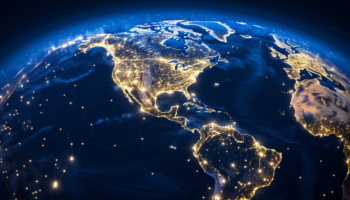The Ultimate Guide to
LSD
(Acid, L, Tabs, Blotter, Doses)
LSD is a potentially illegal substance, and we do not encourage or condone the use of this substance where it is against the law. However, we accept that illegal drug use occurs, and believe that offering responsible harm reduction information is imperative to keeping people safe. For that reason, this guide is designed to ensure the safety of those who decide to use the substance.
Overview
01After Hofmann’s discovery, promising research into the potential therapeutic effects of LSD began in the ’50s. But when the drug made its way into the counterculture of the ’60s and ’70s, it became highly stigmatized as a result of unfettered and reckless use among the generation’s young people. It was eventually classified as a Schedule 1 drug, which it remains today.
More recently, LSD has resurfaced as a potential therapeutic drug, partially due to the popularity of microdosing. Although microdosing doesn’t give the full effect of an LSD trip, it has proved useful in helping to destigmatize and normalize this previously scorned substance.
Interested in microdosing LSD? Get our full microdosing course to optimize your experience
Experience
02What to expect
Increased sensory perception is a hallmark effect of LSD. This can take the form of an enhanced appreciation for music (some say that after taking LSD, it’s like they’re hearing music for the first time), or a sharpened sense of smell and taste. Touch also becomes heightened, and many people experience a strong desire to touch soft items as well as other people. Another unique property of LSD, as well as other psychedelics, is synesthesia, a condition that involves senses merging—you might “taste” music or “hear” colors.
Vivid hallucinations are also a common and profound aspect of an LSD experience. Consisting of often colorful visions, hallucinations are often the highlight of people’s experiences. Auditory hallucinations are also not uncommon.
Scientists have multiple theories about why hallucinations occur, including psychedelics’ serotonin receptor action, visual cortex stimulation, and hypothalamus reorganization.
Here’s more on what you can expect from an LSD trip.
Psychological and emotional effects
The psychological effects of LSD can be divided into three main categories: positive, neutral, and negative. At low to moderate dose amounts, it’s more common to have a positive or neutral experience. As the dose size increases, however, so does the possibility of experiencing negative psychological effects.
Positive:
- Increase in associative and creative thinking
- Closed and open-eye visuals
- Ego dissolution
- Sense of unity and connectedness to other life forms
- General sense of euphoria
- Life-changing spiritual experiences
Neutral:
- Change in consciousness
- Lost track of time
- Lack of focus
- Unusual thoughts and speech
- Range of emotions
Negative (many of these are associated with a ‘bad trip’):
- Paranoia
- Anxiety
- Fear of death
- Overwhelming feelings
Grow 1 Year's Worth of Microdoses in Just 6 Weeks
Third Wave partnered with top mycologists to create the world’s easiest and best mushroom growing program (kit, course, and expert support).
- Pre-sterilized and sealed
(ready to use out of the box) - Step-by-step video and text course
- Access to growing expert in community
- Make your first harvest in 4-6 weeks
- Average yield is 1 - 4 ounces (28-108g)
- Fits in a drawer or closet
- Enter info for Third Wave discounts:
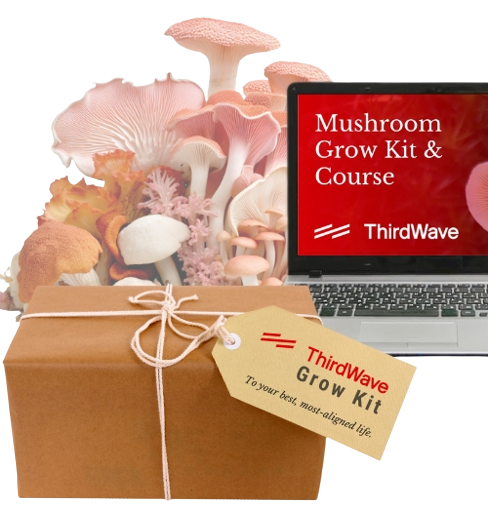
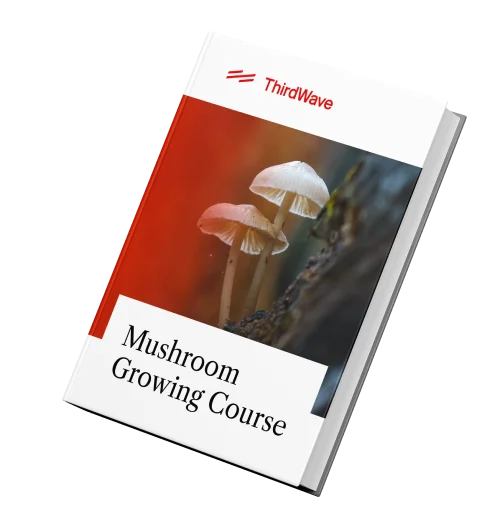
Grow 1 Year's Worth of Microdoses in Just 6 Weeks
Third Wave partnered with top mycologists to create the world’s easiest and best mushroom growing program (kit, course, and expert support).
- Pre-sterilized and sealed
(ready to use out of the box) - Step-by-step video and text course
- Access to experts in community
- Make your first harvest in 4-6 weeks
- Average yield is 1 - 4 ounces (28-108g)
- Fits in a drawer or closet
- Enter info for Third Wave discounts
Effects
03Pharmacology
The psychoactive compound that makes up LSD is derived from a chemical in rye fungus known as Claviceps purpurea. A moderate dose of 75-100µg taken orally will have strong, noticeable effects that often induce deep introspection and feelings of euphoria. These effects can last between 8 and 12 hours depending on the dosage.
When ingested, LSD acts as a 5-HT (serotonin) receptor activator but also deactivates systems that regulate serotonin levels, increasing the chemical in the brain. Of the 15 serotonin receptors in the brain, LSD mostly prefers the 2A subtype (5-HT2A), which is involved in cognitive processes in the prefrontal cortex, the area of the brain responsible for complex cognitive behavior, personality expression, decision-making, and social behavior. It also plays a key role in our ability to process information from other brain systems and make goal-directed decisions.
Interactions with other substances
Only a limited amount of data exists around LSD’s interaction with other drugs, whether good or bad, but it’s best to be cautious when mixing any two substances together. Here’s what we do know.
Positive Interactions
- Marijuana: No known dangers, but also has the potential to enhance the psychedelic nature of LSD.
Negative Interactions
- Alcohol: The general consensus is to avoid this combination. Alcohol itself is a potent psychoactive drug. Taken in tandem with other even more intensely psychoactive drugs alters the way the body metabolizes both substances. In other words, it has the potential to weaken your trip and/or make you sick.
- Antipsychotic medications: Early studies show that the antipsychotic medication chlorpromazine (brand names Thorazine and Largactil) diminishes many of the physical effects of moderate to high doses of LSD without significantly altering its psychedelic effects.
- Antidepressants: Medications that employ selective serotonin reuptake inhibitors (SSRIs) and monoamine oxidase inhibitors (MAOIs) also appear to diminish the effects of LSD. Some tricyclic antidepressants (e.g., Anafranil) have been reported to increase the effects of LSD. Lithium, often prescribed for treatment of bipolar disorder, has been reported to greatly increase the effects of LSD and increases the risk of temporary comatose states.
Benefits & Risks
04Potential Benefits
Since its invention, LSD has been utilized as a tool for self-exploration and spiritual growth, as well as an agent for healing and change. Today, the benefits of LSD are being recognized in a big way. Studies into LSD are being conducted across the United States and abroad, and evidence is strong that it can be a driver of personal growth. In fact, some studies have shown that LSD could help treat anxiety and depression, as well as boost creativity, personal growth, and spirituality. In fact, a 2016 study found that healthy individuals had a more positive outlook on life and more openness two weeks after taking LSD.[1]
Many people who have had spiritual experiences on LSD say the drug helped them face parts of themselves they didn’t know existed. While these experiences can be difficult and even terrifying, virtually everyone who has had difficult yet profound psychedelic experiences say they’re better for it.
However, very little systematic research exists on LSD and spiritual experiences. This has caused some to question the direction of the relationship between psychedelic use and spirituality. Does LSD aid in spiritual growth, or do people who are inclined to seek spiritual growth end up taking LSD? From what we can tell, it’s a bit of both.
Risks
Though LSD has long been cast as a dangerous drug, there have been no documented deaths from LSD overdoses in humans. While “supra-heroic” doses can be dangerous, the risk of death or serious harm is minimal for healthy people. There’s one report of eight people who mistook LSD for cocaine and snorted between 1000-7000 µg of LSD – an extremely high concentration. They suffered comatose states, hyperthermia, vomiting, light gastric bleeding, and respiratory problems, but all of them recovered with hospital treatment and without any residual effects.
Additionally, there are no known long-term, negative side effects of LSD use. The biggest risk factors have more to do with state of mind and environment (set and setting) than they do with actual physical harm. LSD trips can feel overwhelming at times, but the risks of endangering or hurting yourself are incredibly low.
While there is no conclusive evidence suggesting that psychedelics can activate latent mental health problems, many scientists subscribe to this theory. [2] With this in mind, if you have a family history of mental illness (especially schizophrenia), it’s advised that you avoid any psychedelic drug.
One long-term (although rare) effect of psychedelic use is hallucinogen persisting perception disorder (HPPD). HPPD is characterized by a continual presence of sensory disturbances, most often visual, sometimes continuing for months or years following psychedelic use. It can be treated with antipsychotic or antiseizure drugs. HPPD is rare, but is more likely to occur if psychedelics are taken outside of a safe, responsible situation (i.e. without adhering to the 6 S’s). [3]
Numerous studies have also found no evidence of chromosomal damage or developmental defects in humans caused by LSD. However, in mice, LSD administered during pregnancy did cause some developmental damage at extraordinarily high doses (up to 500 µg/kg). [4]
For more on the side effects and risks, see LSD Side-Effects: Risks To Be Aware of When Consuming LSD.
Therapeutic Use
05Studies from the ’50s and ’60s
Studies into the therapeutic effects of LSD began in earnest in the ’50s and ’60s. During this time, more than 1,000 academic papers and dozens of books were published on the use of LSD in psychotherapeutic settings.[5] But following the counterculture backlash in the ’60s, the federal government outlawed its use and added it to the list of Schedule 1 drugs. After that, research became impractical, if not impossible.
Nonetheless, these initial studies considered LSD’s potential for a variety of applications. Relatively large, single doses (200 µg or more) were used to treat addicts, criminals, or even to help transform the lives of everyday people. Other approaches used small to moderate doses (up to 150 µg) in conjunction with psychotherapy to treat various mental health disorders. People with major depression and general anxiety who were resistant to traditional therapy appeared to benefit from LSD’s effects during treatment.
Everything you need to know about Microdosing in one place
Download our FREE guide to learn how to begin a microdosing regimen, calibrate your dose level, and get the most out of your experience.
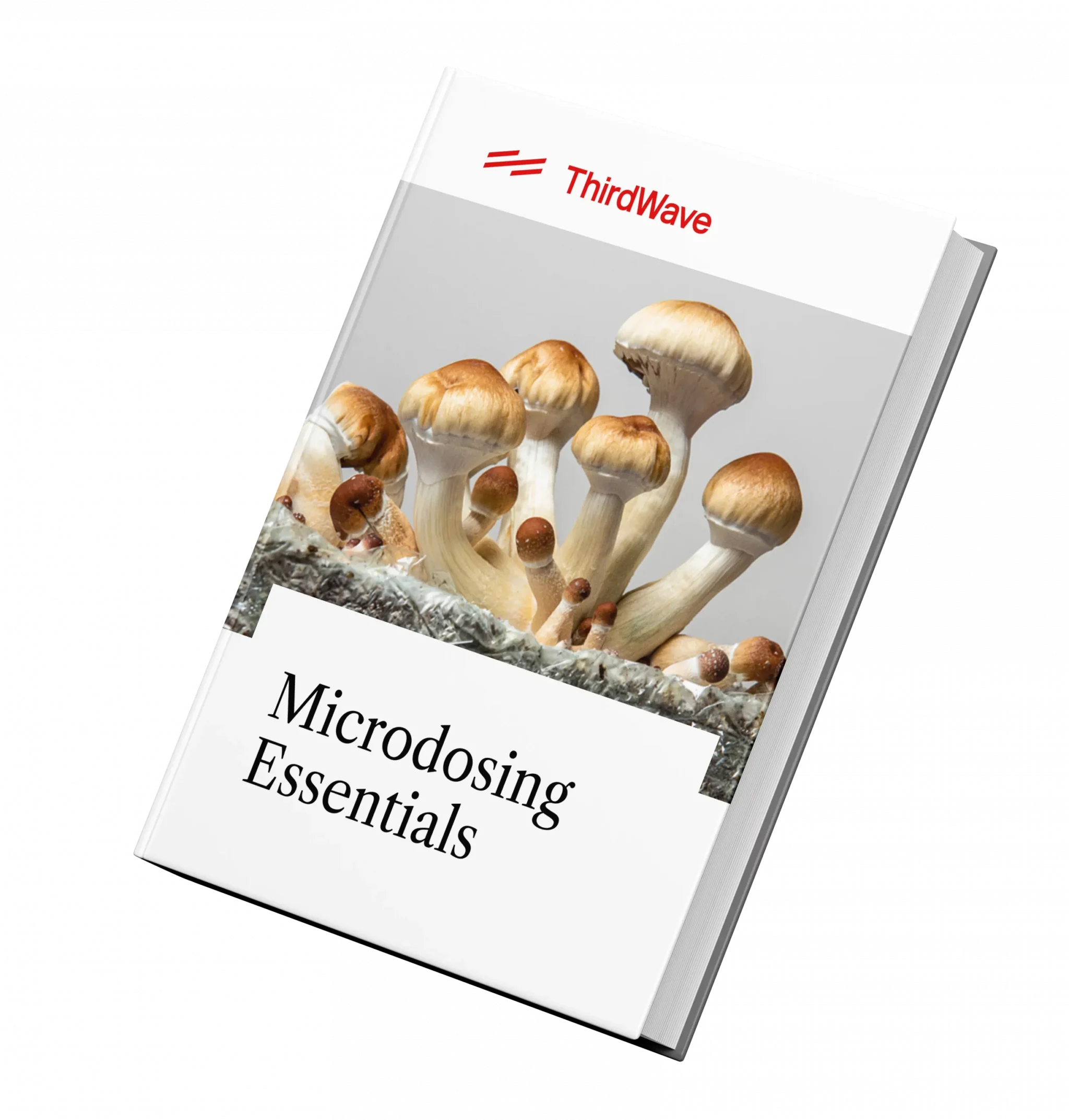
“This FREE Guide was just what I needed to take the first step into Microdosing. AND IT WAS THE BEST DECISION OF MY LIFE! After starting my microdosing regiment I now have more focus, energy and clarity into what it is I truly want in this world.”
James, New York
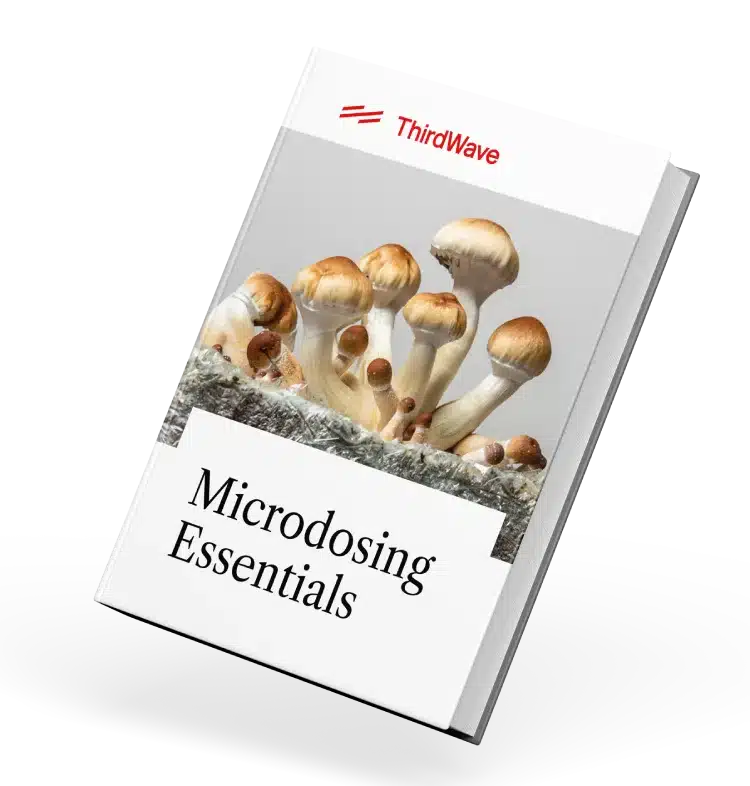
Everything you need to know about Microdosing in one place
Download our FREE guide to learn how to begin a microdosing regimen, calibrate your dose level, and get the most out of your experience.
Other studies focused on the mystical experiences elicited by LSD and the resulting after-effects. Some of the early therapeutic uses of LSD indicated promising results in treating addiction, OCD, cluster headaches, depression, and end-of-life anxiety. [6]
1980s Swiss study
From the early ’70s to the mid-’80s, research on the therapeutic use of psychedelics was more or less forbidden worldwide. In 1988, however, the Swiss government granted special permission to a select group of therapists to research therapeutic uses of MDMA and LSD. This research went on until 1993, when the Swiss government reversed its decision and forbade all psychedelic research.
However, a follow-up study was commissioned by the Swiss government in 1994 and written by one of the researchers, Peter Gasser.[7] The study examined patients who were seeking psychotherapy for various mental disorders. All of the 121 participants were involved in group and one-on-one therapy in conjunction with their psychedelic dosing treatments. Among this sample, interpersonal problems, psychological issues, self-exploration, and somatic issues were all cited as reasons for seeking treatment.
Overall, about 90% of the patients involved in these studies reported having good or slight improvement on the issues for which they sought therapy. No complications were observed, though one patient reported becoming more depressed during therapy. No suicides were committed, no one was hospitalized, and no one had a psychotic episode lasting more than 48 hours.
Recent therapeutic research
A recent review of 25 years of research (1990-2015) on LSD, as well as psilocybin and ayahuasca, found that research consistently suggests psychedelics show great potential to treat anxiety disorders, depression, and addiction.[8]
In a double-blind study involving individuals with life-threatening diseases, LSD psychotherapy sessions were found to reduce end-of-life anxiety. Twelve months later, the effects of this intervention were still present. [9] Improvements were also seen in a cancer quality-of-life questionnaire and a hospital anxiety and depression scale.
In another study, researchers found that LSD-assisted psychotherapy had long-term, positive effects on patients diagnosed with life-threatening diseases. These changes included reductions in anxiety, a rise in the perceived quality of life, valuable insights, and improvements in social relationships.
Addictive disorders, especially alcoholism, have long been a target of psychedelic therapies. A 2012 meta-analysis of six randomized control trials including 536 subjects confirmed the efficacy of a single dose of LSD in treating alcoholism.[10] Results from these studies showed that LSD had a success rate of 81% to 100% for treating alcoholism when success was defined as abstinence at first follow up.
There’s also a growing case for treating with post-traumatic stress disorder (PTSD) with LSD, though no clinical trials have been conducted to date.
New research on LSD safety
As cultural values begin to shift, research into LSD’s therapeutic and non-therapeutic potential is growing. Recently, The Beckley Foundation raised money through a crowd-funded campaign to begin to investigate the effects of LSD on the brain. The latest study involved giving 20 volunteers a small dose of LSD and then using MRI and MEG imaging to show how it affects brain processes. The researchers believe LSD may reduce blood flow to the brain’s control centers, dampening their activity, which ultimately enhances brain connectivity. It’s thought that this increase in brain connectivity, or “entropy,” gives rise to the creative and unique thought patterns associated with the psychedelic experience, and could even be responsible for feelings of ego dissolution.[11]
In 2015, a large study (~130,000 people) conducted in the US found no association between psychedelic use and mental health disorders, psychological distress, suicidal thoughts, depression, and anxiety.[12]
Are you feeling drawn to work with plant medicines for your mental health? Third Wave’s vetted Psychedelic Directory offers an honest, in-depth guide to safely accessing these substances.
Personal Growth
06Though ego dissolution can also enhance more fundamental aspects of the self, including creativity. Many famous creative people have credited LSD as their inspiration for some of their most impactful work. Aldous Huxley is perhaps one of the best-known advocates of psychedelic use. His books The Doors of Perception (1954)and Island (1962) were inspired in part by his psychedelic experiences and helped spur the ’60s counterculture movement. LSD became a major part of Huxley’s life and he has spoken about its link to creativity and a broader view of the world. On his deathbed, Huxley asked his wife to inject him with a dose of LSD.
Apple founder Steve Jobs notoriously took LSD, noting that “taking LSD was a profound experience, one of the most important things in my life.” Francis Crick also claims to have envisioned the double-helix structure of DNA while tripping on LSD, though this has been widely contested. He and Jim Watson won a Nobel Prize for their work and this is now considered to be one of the most important scientific discoveries in history.
More recently, a 2016 study looked at the relationship between LSD and language as a way to measure creativity. Results found that the drug gave rise to unique word-image associations that suggest a change in divergent thinking, which is associated with creativity. There’s also plenty of anecdotal evidence that suggests LSD can enhance creativity in everyday tasks, and studies with similar psychedelics such as ayahuasca and mescaline show they can improve problem solving and creative thinking.
In addition to ego dissolution and enhanced creativity, a recent study also showed that LSD enhances people’s ability to feel empathy and increases their desire to be with other people. [14]
Microdosing
07Preliminary research is increasingly backing up these claims. A recent survey of 1,000+ people from 59 countries who had been microdosing LSD for a period of one week to four months revealed elevated mood, decreases in depression, increases in energy and productivity, and adoption of better health habits.
Other companies and organizations are just beginning to look at the effects of microdosing LSD. MindMed is starting clinical trials to explore the effects of microdosing on ADHD, Eleusis is exploring its potential for Alzheimers, and the Beckley Foundation is conducting a series of studies to understand its potential therapeutic applications. Their first study will look at LSD microdosing’s effect on creativity, cognitive flexibility, and wellbeing.
Now, microdosing has become a global trend, with thousands of personal accounts posted on forums such as Reddit.
However, there is still a lot we don’t know about microdosing LSD. Psychiatric pharmacist Kelan Thomas warns that chronic microdosing could put you at risk for valvular heart disease due to psychedelic-induced changes of heart valve cells via serotonin 2B receptor (5HT2B) activation. While microdosing LSD is a good starting point for people new to psychedelics, microdosing mushrooms may be a better, more sustainable option. See our microdosing mushroom guide for more information.
To learn more about microdosing LSD, read our comprehensive guide, our volumetric microdosing guide, and LSD vs Shrooms.
Grow 1 Year's Worth of Microdoses in Just 6 Weeks
Third Wave partnered with top mycologists to create the world’s easiest and best mushroom growing program (kit, course, and expert support).
- Pre-sterilized and sealed
(ready to use out of the box) - Step-by-step video and text course
- Access to growing expert in community
- Make your first harvest in 4-6 weeks
- Average yield is 1 - 4 ounces (28-108g)
- Fits in a drawer or closet
- Enter info for Third Wave discounts:


Grow 1 Year's Worth of Microdoses in Just 6 Weeks
Third Wave partnered with top mycologists to create the world’s easiest and best mushroom growing program (kit, course, and expert support).
- Pre-sterilized and sealed
(ready to use out of the box) - Step-by-step video and text course
- Access to experts in community
- Make your first harvest in 4-6 weeks
- Average yield is 1 - 4 ounces (28-108g)
- Fits in a drawer or closet
- Enter info for Third Wave discounts
Legality
08Where is LSD legal?
The following information may not always reflect the latest developments, but we’ll endeavor to keep it up to date. It is only intended to cover the personal, non-medical possession and use of LSD.
Countries where LSD is legal
LSD doesn’t appear to be legal in any country at present.
Countries where LSD is decriminalized
There appears to be no risk of a criminal penalty for the personal (i.e. “small” quantity) possession or use of LSD in:
- Argentina[16]
- Armenia[16]
- Chile[16]
- Colombia[16]
- Costa Rica[16]
- Croatia[16]
- Czech Republic[16]
- Estonia[16]
- Germany[16]
- Italy[16]
- Mexico[16]
- Netherlands[16]
- Norway[17][18]
- Paraguay[16]
- Peru[16]
- Poland[16]
- Portugal[16]
- Russian Federation[16]
- Spain[16]
- Switzerland[16]
- Uruguay[16]
Important: Decriminalization isn’t a free pass to use LSD however you want. The specifics depend on the country or region and, crucially, on the amount you have in your possession. Confiscation is common, but there may be other, more severe non-criminal outcomes such as fines, driving license suspension, and deportation.
Countries where LSD is illegal
Although LSD is illegal or controlled in each of these countries, there may be regional or circumstantial (e.g. religious) exceptions, as noted below:
- Austria[19]
- Belgium[20]
- Canada[21]
- Denmark[22]
- Latvia[23]
- United Kingdom[24]
- United States[25]
- Australia[26]
- New Zealand[27]
- Ecuador (over 20 µg)[28]
- Brazil[29]
- Finland[30]
- Greece[31]
Get Your FREE Ultimate Guide To Microdosing for Depression.
Sometimes hope comes in micro-doses. This guide will walk you through the process and how to best use the healing potential of psychedelics in a safe, intentional way to heal depression.
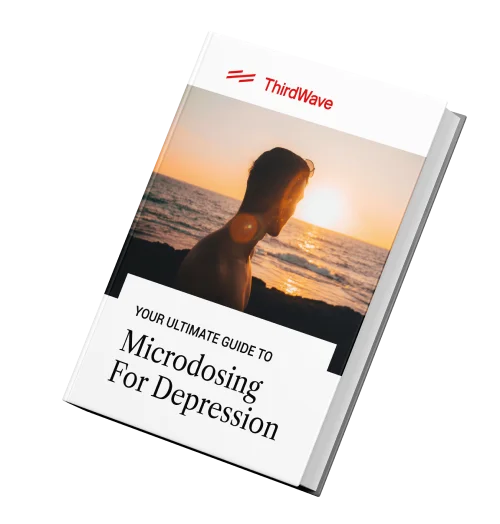

Get Your FREE Ultimate Guide To Microdosing for Depression.
Sometimes hope comes in micro-doses. This guide will walk you through the process and how to best use the healing potential of psychedelics in a safe, intentional way to heal depression.
History & Stats
09General timeline
- Synthesized in 1938
- Psychedelic properties discovered in 1943
- Discovered by mainstream America in the 1950s
- Widely used in therapy throughout the 1950s and ’60s
- Influenced the counterculture of the 1960s
- Declared an illegal drug in 1968; all related therapy research stopped
- Used by about 10% of Americans and Europeans throughout the 1970s, ’80s, and ’90s
- A resurgence of interest in the modern age
Read More: Legal Status Of LSD And 1P-LSD
Synthesis of LSD
Albert Hofmann, a Swiss pharmacology researcher, synthesized LSD in 1938 while trying to develop a drug to aid uterine contractions during childbirth. He began synthesizing compounds from a rye fungus called ergot and eventually created LSD. It was the twenty-fifth substance in a series of lysergic acid derivatives, and hence, its official name was lysergic acid diethylamide — abbreviated LSD-25.[32]
LSD turned out to be a less effective childbirth aid than other drugs at the time, so Hofmann shelved it. But he never lost interest in ergot. In 1943, he re-synthesized the drug in the hope of performing more experiments with it. At some point during the synthesis, a small drop of LSD landed on Hofmann’s skin. Soon, he was interrupted by strange sensations. As he described it in his book LSD, My Problem Child:
“Last Friday, April 16, 1943, I was forced to interrupt my work in the laboratory in the middle of the afternoon and proceed home, being affected by a remarkable restlessness, combined with a slight dizziness. At home I lay down and sank into a not unpleasant intoxicated-like condition, characterized by an extremely stimulated imagination. In a dreamlike state, with eyes closed (I found the daylight to be unpleasantly glaring), I perceived an uninterrupted stream of fantastic pictures, extraordinary shapes with intense, kaleidoscopic play of colors. After some two hours this condition faded away.”
Hofmann had just experienced the first LSD trip.
LSD use in the 1950s – focus on medical science
After discovering LSD’s potent effects, Hofmann and other researchers at Sandoz carried out animal trials to determine tolerance and toxicity properties. In 1947, they conducted the first systematic investigation of LSD on human beings at a psychiatric clinic in Basel.
The first studies involved healthy subjects as well as schizophrenic patients. In the experiments, subjects consumed small to moderate amounts of LSD — anywhere from 20 to 130 micrograms (µg). Although these first experiments did not measure LSD’s therapeutic ability, the researchers did speculate about the possibility of drug-assisted psychotherapy.
In the late 1950s, research expanded beyond treating mental illness into using psychedelic drugs to facilitate psychotherapy.
MK-ULTRA, the CIA, and the 1960s counterculture
In the 1950s, the CIA became interested in the use of psychedelics as a truth serum and began experimenting with it in their covert mind control division named Project MK-ULTRA.
Inspired by the Nazis’ use of mescaline in concentration camps during WWII, the CIA carried out these top-secret studies by administering LSD to experimental subjects. Hundreds of participants, including CIA agents, government employees, military personnel, prostitutes, members of the general public, and mentally ill individuals, consumed varying amounts of LSD, often unknowingly and without consent.
These experiments went on until the mid-1970s. Eventually, the CIA shut the program down due to the wild variability of its results.
In the 1960s, Dr. Sidney Cohen, who had conducted controlled experiments to test the psychoanalytical capabilities of LSD, warned of the coming widespread use by the mainstream public. In congressional hearings on LSD in 1966, Cohen told Congress that the substance was safe only if administered under strict medical supervision and that, if in the wrong hands, it was a “dangerous drug.”
As LSD grew in popularity in the ’60s counterculture, the public latched on to dramatic stories of murders, jumping out of windows, and inducing blindness by staring at the sun. None of these stories – including the one about LSD causing birth defects – held any truth.[33] Hofmann characterized the sentiment of this time as “veritable LSD hysteria.”
In 1968, the US. government declared possession of LSD illegal. In 1970, it was declared a Schedule I drug, meaning that the government considered it to have “a high potential for abuse,” and was without “any accepted medical use in treatment.”
From the 1970s to today
Use of LSD dropped off in the late ’60s and ’70s. In the ’80s, as MDMA became increasingly popular, recreational and psychotherapeutic use of LSD also increased. In 1986, the Multidisciplinary Association of Psychedelic Studies (MAPS) was founded by Rick Doblin with the purpose of investigating the therapeutic potential of psychedelic drugs.
Since the re-emergence of interest in psychedelic-assisted therapy, many new research organizations have sprung up. Perhaps most notable is the Beckley Foundation, which has funded several groundbreaking scientific studies into LSD’s effects on the brain. In 2019, Johns Hopkins announced the opening of its Center for Psychedelic and Consciousness Research, the US’s first research facility dedicated to psychedelic drug studies.
Current LSD use
In many research reports, psychedelics are lumped together as a single class of drugs. Consequently, LSD statistics are not as informative as data on other non-psychedelic drugs.
That said, here are a few stats on LSD use:
- An analysis of data collected in 2010 for the National Survey on Drug Use and Health (NSDUH) estimated that between 22 and 25 million people in the US have used LSD at some point in their lifetimes.[34] The highest usage rates reported were among 30-34 year olds: about 20% in this age group reported having used LSD at some point in their lives.
- More recently, the 2015 NSDUH survey showed that about 287,000 people 12 years of age and older in the US had used LSD within the past month.
- In Europe, up to 4.7% of all people aged 15-64 have taken LSD at least once, and more than 0.3% of this same age group have used it in the past year.
For additional reading on the history of LSD, please refer to the resources section and the book Acid Dreams: The Complete Social History of LSD: the CIA, the Sixties, and Beyond.
Myths
10Myth 1: LSD is often laced with strychnine and other adulterants
Adulteration happens with every well-known drug including cocaine, heroin, marijuana, MDMA, and LSD. But the extent to which contamination occurs must be analyzed.
According to the Psychedelic Explorer’s Guide, the definitive text on responsible psychedelic use, LSD’s adulteration with toxic substances is largely unsubstantiated. Prominent among this myth is the fear of methamphetamine and strychnine (rat poison).
The rat poison myth may have been fortified by a report filed by Albert Hofmann himself. Apparently, he analyzed a powder sample purported to be LSD that turned out to be 100% strychnine. This one-off occurrence somehow led to a widespread belief that LSD was commonly laced with strychnine.
For methamphetamine, the myth is derived from more tangible evidence. Forty years ago, when studies were carried out on adulterant use in LSD, 581 street samples were tested. Of the 581 street samples, 84.5% contained LSD alone, 6.9% contained PCP and .9% contained amphetamine or methamphetamine. None of the samples contained strychnine.
Even though nearly 15% of the samples were adulterated in this study, the possibility of such adulteration today is almost zero. While most LSD came in liquid form in the ’60s, making it much easier to adulterate, today’s LSD is primarily sold on blotter paper. For the substance to bind to the paper. it cannot contain sufficient amounts of adulterants.
Important Note: These days, blotter papers sold as LSD can contain potentially harmful chemicals such as NBOMes and DOxs. If you purchase LSD blotter from an unknown source, make sure to test your substances with a kit or send them to a lab for testing. A good rule of thumb is to get rid of blotter that tastes extremely bitter – LSD is tasteless, so a strong taste could be an indicator of an NBOMe that could be harmful.
Myth 2: LSD causes chromosome damage and birth defects
In 1967, the journal Science published a short study claiming that adding LSD to cultured human white blood cells caused chromosomal abnormalities. The results of this study snowballed into a myth of “genetic damage” in grown adults and birth defects in newborns.
According to the Psychedelic Explorer’s Guide, however, “later and more careful studies demonstrated that the conclusions drawn from the initial research were ill-founded.”
A comprehensive review of sixty-eight studies and case reports found that pure LSD does not damage chromosomes or cause detectable genetic damage.
Myth 3: LSD will make you go crazy
One of the most insidious LSD myths is the belief that it will activate some sort of mental illness and cause them to go crazy. A common belief is that this state of madness will cause the user to jump off a building or remain a permanent state.
While there is a sliver of truth in each of these fears, our disposition to jump to dramatic conclusions has created pervasive, damaging myths. Although psychoactive drugs produce a variety of acute behavioral effects, the degree of these effects is directly related to the size of the dose. Countless people have taken LSD without feeling an urge to jump out of a building.
Acute insanity, or a “bad trip,” is also susceptible to biased beliefs. As the 6 S’s suggest, the LSD experience is not only determined by the pharmacological effects (substance) but also by beliefs that accompany the experience (mindset).
If you are psychologically stable prior to using LSD, the chances of experiencing long-term psychological damage are about zero. If, however, you have a family history of certain mental disorders, then it is probably best to avoid using psychedelics.
Myth 4: Flashbacks are brought on by stored LSD leaking in the body
This myth comes from claims that LSD lodges itself in the brain, spinal cord, and body fat, and can leak out even years later to produce adverse effects.
This assumption is misguided. There is no evidence suggesting that LSD remains in the body for extended periods of time. Instead, it has a short half-life of three to five hours and is entirely metabolized within a day after ingestion.
So, why do flashbacks occur? Psychedelic literature generally cites two reasons: an easily activated occurrence of memory and the re-emergence of conflictual material released from the unconscious mind during the trip.
One of the leaders in LSD therapy, Stanislav Grof, states in his classic book, LSD Psychotherapy:
“Sessions in which the drug activates areas of difficult emotional material and the individual tries to avoid facing them can lead to prolonged reactions, unsatisfactory integration, subsequent residual emotional or psychosomatic problems, or a precarious mental balance that becomes the basis for later ‘flashbacks.”
By dispelling myths like this, the public can begin to make informed decisions and hold rational debates about psychedelic use.
Grow 1 Year's Worth of Microdoses in Just 6 Weeks
Third Wave partnered with top mycologists to create the world’s easiest and best mushroom growing program (kit, course, and expert support).
- Pre-sterilized and sealed
(ready to use out of the box) - Step-by-step video and text course
- Access to growing expert in community
- Make your first harvest in 4-6 weeks
- Average yield is 1 - 4 ounces (28-108g)
- Fits in a drawer or closet
- Enter info for Third Wave discounts:


Grow 1 Year's Worth of Microdoses in Just 6 Weeks
Third Wave partnered with top mycologists to create the world’s easiest and best mushroom growing program (kit, course, and expert support).
- Pre-sterilized and sealed
(ready to use out of the box) - Step-by-step video and text course
- Access to experts in community
- Make your first harvest in 4-6 weeks
- Average yield is 1 - 4 ounces (28-108g)
- Fits in a drawer or closet
- Enter info for Third Wave discounts
FAQ
11Does LSD show up on a drug test?
The short answer is yes, but there are a few caveats.[35]
Excretion through urine reaches a peak about four to six hours after administering a dose in humans, but even then, the amounts are quite small. There are four known major metabolites of LSD in humans that are excreted and can be detected in urine for up to four to five days after ingestion, with observed inter-individual variation.
Several criteria determine how long LSD can be detected in the body:
- the test being used
- the detection limit placed on the test
- the point of collection
- the type of sample fluid
- the amount that was ingested.
LSD can be detected in blood for six to 12 hours and in urine for two to four days. However, one metabolite (2-oxo-3-hydroxy-LSD) is typically present in higher concentrations and can be detected for longer periods of time in urine.
Tests for LSD (but not its metabolites) in hair samples are also available and they’re good for detecting both low doses and single uses, apparently for an underdetermined but long period of time after dosing.
However, for now, it is not typically included in standard drug screens.
Where can I buy LSD?
Being an illegal substance in nearly every country around the world, acquiring LSD comes with a certain set of risks. We do not condone or endorse breaking the law, but we do realize that consenting adults sometimes engage in illegal activity in otherwise nonviolent ways.
There are underground, black market sources—both online and offline —that can be used to purchase LSD.
Many music and art festivals will have LSD “vendors” (illegal, of course), and asking around at these events will likely lead you to them.
All of that said, the purity and safety of the substances you’re buying can rarely be verified with any degree of certainty, so it’s best to use a testing kit for LSD or any other substance you buy from an unverified source.
Can I test my LSD to find out if it’s safe to take?
Testing your LSD is always good practice even when you trust your supplier. Reagent test kits from Bunk Police can identify hundreds of adulterants and substitutes—offering peace of mind and potentially saving your life.
25I-NBOMe, for example, has on occasion been mis-sold as LSD with fatal consequences. The Ehrlich reagent can help to rule it out. Simply place a tiny amount of LSD into a sterile test tube or onto a sterile white ceramic surface and add a few drops of the reagent. Then check the color change (or lack thereof) against the supplied spectrum booklet.
Aslo see our guide on How to Find LSD.
Do I have real LSD?
Depending on the dose and route of ingestion, LSD should take between 45 and 90 minutes to kick in. The experience can last 12-16 hours. Click here to learn more about what to expect from real LSD.
If you feel any other effects, or your experience lasts considerably longer than 16 hours, you may not have taken LSD. If your blotter paper had a bitter taste, or numbed your tongue, it may have contained NBOMe or DOx.
It’s safest to be sure about what you’re taking (see the 6S’s). If possible, get your drugs tested.
Can LSD cause psychological trauma?
If you follow the 6S’s of psychedelic use, and avoid taking psychedelics if you have a family history of mental health issues, they are unlikely to cause psychological trauma.
LSD can cause you to feel crazy for a short time (acute psychosis), known colloquially as a “bad trip,” if you don’t follow the 6S’s. Although there is no concrete evidence, it’s thought that psychedelics might be able to cause latent mental illness to appear, so avoid taking them if you have a family history of mental health issues.
How do I take it?
LSD is most often sold as blotter, dissolved onto paper squares. It can also be taken in tablets, as a crystal or as a liquid, though these forms are not common these days.
In blotter form, a tab of the paper is held on the tongue until dissolved. The paper can be swallowed.
25-100ug is recommended as a first dose. This is typically about a quarter to a full tab.
How do I microdose with LSD?
A microdose of LSD is typically around 10ug, and is re-dosed every four days. Microdoses are easiest to measure out with blotter paper, which can be cut into tenths. Click here for a detailed guide on microdosing with LSD.
How does tolerance work?
Taking a moderate dose of LSD will produce an immediate tolerance. If you take the drug again soon, it will have a weaker effect. You should wait at least three days between doses.
Can I mix LSD with other drugs?
LSD should not be mixed with Tramadol, as it can lead to serotonin syndrome. Be cautious if mixing LSD with cannabis, amphetamines, or cocaine. Click here for a detailed chart of safe drug combinations.
Footnotes
12[1] Carhart-Harris, R. L., Kaelen, M., Bolstridge, M., Williams, T. M., Williams, L. T., Underwood, R., … Nutt, D. J. (2016). The paradoxical psychological effects of lysergic acid diethylamide (LSD). Psychological Medicine, 46(07), 1379–1390. Retrieved from: https://www.cambridge.org/core/services/aop-cambridge-core/content/view/FA7A234B809A951253AF5C29AC79CA4A/S0033291715002901a.pdf/paradoxical_psychological_effects_of_lysergic_acid_diethylamide_lsd.pdf.
[2] Nichols D.E. (2004) Hallucinogens. Pharmacology & Therapeutics, 101, 131-181. Retrieved from: https://www.sciencedirect.com/science/article/abs/pii/S0163725803001657.
[3] Nichols D.E. (2016). Psychedelics. Pharmacological Reviews 68(264-355). Retrieved from: http://pharmrev.aspetjournals.org/content/pharmrev/68/2/264.full.pdf.
[4] Annelie Hintzen, Torsten Passie (2010). The Pharmacology of LSD: a critical review (p.78). Oxford University Press. Retrieved from: https://amzn.to/3eBirGd.
[5] See: Grinspoon, L., & Bakalar, J. B. (1980). The psychedelic drug therapies. Current Psychiatric Therapies, 20, 275–283. Retrieved from: http://www.psymon.com/psychedelia/articles/grin-bak.htm.
[6] Nichols D.E. (2016). Psychedelics. Pharmacological Reviews 68(264-355). Retrieved from: http://pharmrev.aspetjournals.org/content/pharmrev/68/2/264.full.pdf.
[7] Gasser, P. MAPS – Psycholytic Therapy with MDMA and LSD in Switzerland. (1994). Retrieved from: https://maps.org/news-letters/v05n3/05303psy.html.
[8] dos Santos, R. G., Osório, F. L., Crippa, J. A. S., Riba, J., Zuardi, A. W., & Hallak, J. E. (2016). Antidepressive, anxiolytic, and antiaddictive effects of ayahuasca, psilocybin and lysergic acid diethylamide (LSD): a systematic review of clinical trials published in the last 25 years. Therapeutic Advances in Psychopharmacology, 2045125316638008. Retrieved from: https://www.ncbi.nlm.nih.gov/pmc/articles/PMC4910400/pdf/10.1177_2045125316638008.pdf.
[9] Gasser, P., Holstein, D., Michel, Y., Doblin, R., Yazar-Klosinski, B., Passie, T., & Brenneisen, R. (2014). Safety and efficacy of lysergic acid diethylamide-assisted psychotherapy for anxiety associated with life-threatening diseases. The Journal of Nervous and Mental Disease, 202(7), 513. Retrieved from: https://www.ncbi.nlm.nih.gov/pmc/articles/PMC4086777/pdf/nmd-202-513.pdf.
[10] Krebs, T. S., & Johansen, P. al-Ørjan. (2012). Lysergic acid diethylamide (LSD) for alcoholism: meta-analysis of randomized controlled trials. Journal of Psychopharmacology, 26(7), 994–1002. Retrieved from: https://www.researchgate.net/publication/221692919_Lysergic_Acid_Diethylamide_LSD_for_Alcoholism_Meta-Analysis_of_Randomized_Controlled_Trials.
[11] Tagliazucchi, E., Roseman, L., Kaelen, M., Orban, C., Muthukumaraswamy, S. D., Murphy, K., … Carhart-Harris, R. (2016). Increased Global Functional Connectivity Correlates with LSD-Induced Ego Dissolution. Current Biology. Retrieved from: https://www.cell.com/current-biology/pdfExtended/S0960-9822(16)30062-8.
[12] Johansen, P.-Ø., & Krebs, T. S. (2015). Psychedelics not linked to mental health problems or suicidal behavior: A population study. Journal of Psychopharmacology. Retrieved from: https://www.researchgate.net/publication/273154807_Psychedelics_not_linked_to_mental_health_problems_or_suicidal_behavior_A_population_study.
[13] Tagliazucchi, E., Roseman, L., Kaelen, M., Orban, C., Muthukumaraswamy, S. D., Murphy, K., … Carhart-Harris, R. (2016). Increased Global Functional Connectivity Correlates with LSD-Induced Ego Dissolution. Current Biology. Retrieved from: https://www.researchgate.net/publication/301306558_Increased_Global_Functional_Connectivity_Correlates_with_LSD-Induced_Ego_Dissolution.
[14] Dolder et al (2016). LSD acutely impairs fear recognition and enhances emotional empathy and sociality. Neuropsychopharm, 41(11):2638-2646. Retrieved from: https://www.researchgate.net/publication/303742914_LSD_Acutely_Impairs_Fear_Recognition_and_Enhances_Emotional_Empathy_and_Sociality.
[15] UNODC. Convention on Psychotropic Substances, 1971. Retrieved from https://www.unodc.org/pdf/convention_1971_en.pdf.
[16] TalkingDrugs. (2020). Drug Decriminalisation Across the World. Retrieved from https://www.talkingdrugs.org/drug-decriminalisation.
[17] Lovdata. Not available: Drugs Regulations, etc. (Drug List). Retrieved from https://lovdata.no/dokument/SFO/forskrift/1978-06-30-8.
[18] Government.no. (2019, Dec 20). – A historic day for Norwegian drug policy. Retrieved from https://www.regjeringen.no/en/aktuelt/historic-day-for-norwegian-drug-policy/id2683528/.
[19] RIS Informationsangebote. BUNDESGESETZBLATT FÜR DIE REPUBLIK ÖSTERREICH [1997, Sep 5]. Retrieved from https://www.ris.bka.gv.at/Dokumente/BgblPdf/1997_148_3/1997_148_3.pdf.
[20] AFMPS. (2017, Sep 26). SERVICE PUBLIC FEDERAL SANTE PUBLIQUE, SECURITE DE LA CHAINE ALIMENTAIRE ET ENVIRONNEMENT. Retrieved from https://www.fagg-afmps.be/sites/default/files/content/INSP/NARC/kb-ar-20170906.pdf.
[21] Canada. (2020, Feb 11). Controlled Drugs and Substances Act (S.C. 1996, c. 19). Retrieved from https://lois-laws.justice.gc.ca/eng/acts/C-38.8/.
[22] Danish Medicines Agency. Bilag 1. Retrieved from https://laegemiddelstyrelsen.dk/da/godkendelse/virksomhedstilladelse-og-registrering/euforiserende-stoffer/liste-over-stoffer/~/media/BD3103CB7080427DB7125B0685EF6427.ashx.
[23] Latvijas Vestnesis. (2005, Nov 8). Regulations on Narcotic Drugs, Psychotropic Substances and Precursors Controlled in Latvia. Retrieved from http://likumi.lv/doc.php?id=121086.
[24] UK Public General Acts. Misuse of Drugs Act 1971. Retrieved from http://www.legislation.gov.uk/ukpga/1971/38/contents.
[25] DEA. (2020, Feb 21). Controlled Substances – Alphabetical Order. Retrieved from https://www.deadiversion.usdoj.gov/schedules/orangebook/c_cs_alpha.pdf.
[26] Australian Government. (2020, Jan 31). The Poisons Standard (the SUSMP). Retrieved from https://www.tga.gov.au/publication/poisons-standard-susmp.
[27] New Zealand Legislation. (1975, Oct 10). Misuse of Drugs Act 1975. Retrieved from http://www.legislation.govt.nz/act/public/1975/0116/latest/DLM436101.html#DLM436576
[28] El Telégrafo. (2013, Jun 4). Ecuador could regulate the drug industry. Retrieved from https://archive.ph/20130624225110/http://www.telegrafo.com.ec/english-bulletin/item/ecuador-could-regulate-drug-sales.html.
[29] Agência Nacional de Vigilância Sanitária – ANVISA. (2016, Dec 2). RESOLUÇÃO DA DIRETORIA COLEGIADA – RDC N° 130, DE 2 DE DEZEMBRO DE 2016. Retrieved from http://portal.anvisa.gov.br/documents/10181/3115436/%281%29RDC_130_2016_.pdf/fc7ea407-3ff5-4fc1-bcfe-2f37504d28b7.
[30] fimea. Narcotics control. Retrieved from https://www.fimea.fi/web/en/supervision/narcotics_control.
[31] Erowid. (2015, Feb 10). LSD – Legal Status. Retrieved from https://erowid.org/chemicals/lsd/lsd_law.shtml.
[32] To see the full history of how LSD came into being, see this article.
[33] Joseph L. Zenter, “The Recreational Use of LSD-25 and Drug Prohibition,” Journal of Psychedelic Drugs, Vol. (No. 4), Oct.-Dec. 1976, p. 301. Retrieved from: https://bibliography.maps.org/bibliography/default/resource/14989
[34] Krebs, T. S., & Johansen, P.-Ø. (2013). Over 30 million psychedelic users in the United States. F1000Research. Retrieved from: https://pdfs.semanticscholar.org/6ee7/374715292bfe3a16cb61f820a4bdc92164cc.pdf.
[35] Passie, T., Halpern, J. H., Stichtenoth, D. O., Emrich, H. M., & Hintzen, A. (2008). The Pharmacology of Lysergic Acid Diethylamide: A Review. CNS Neuroscience & Therapeutics, 14(4), 295–314. Retrieved from: https://www.ncbi.nlm.nih.gov/pmc/articles/PMC6494066/pdf/CNS-14-295.pdf.
Everything you need to know about Microdosing in one place
Download our FREE guide to learn how to begin a microdosing regimen, calibrate your dose level, and get the most out of your experience.

“This FREE Guide was just what I needed to take the first step into Microdosing. AND IT WAS THE BEST DECISION OF MY LIFE! After starting my microdosing regiment I now have more focus, energy and clarity into what it is I truly want in this world.”
James, New York

Everything you need to know about Microdosing in one place
Download our FREE guide to learn how to begin a microdosing regimen, calibrate your dose level, and get the most out of your experience.


